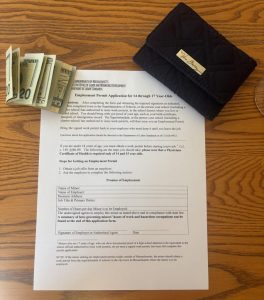E-Cigs : Vaping epidemic plagues WA
December 6, 2017
Over the last couple years, Westford and several neighboring districts have had more and more students vaping at the high school level. Members of administration have been making efforts to reduce the amount of vapes used on campus as well as to educate parents and students about what vapes are and what they can do.
Vapes were originally meant to be a no-tar substitute for smoking, but since smoking has drastically decreased across the country, one would expect the same from vaping. However, high schools have surprisingly experienced an increase, WA being one of them.
Detective Geoffrey Pavao stated that more and more students are vaping nowadays to feel the rush from the nicotine, as well as due to peer pressure. In an effort to prove what they can get away with, students often look to social media to show what they can do.
“People are also posting this on social media such as Snapchat and Instagram, making vaping into a competition,” Pavao said.
As a result, students not only continue to vape in bathrooms, but in other parts of school as well.
Ravi Patel, an associate at Madvapes in Westford, has similar views and sees minors vaping as a social trend.
“It used to be just trying to vape in the bathrooms. Now kids are vaping in classrooms, they’re vaping in gym class, lunch rooms,” Pavao said.
According to Patel, vapes and the liquids that come with them are currently not FDA regulated in the US, but they are in Europe, where vaping has been deemed a healthy alternative to smoking.
There are three types of liquid: one that contains nicotine, another made up of honey butane oil, which is extracted from marijuana, and those who prefer unharmful vapor use water.
The state age restriction for purchasing vapes is eighteen and older, but Westford has a bylaw that restricts anyone under the age of twenty-one.
“In this location, the age of our customers is more than thirty or thirty-five.” Patel said.
Many students are obtaining them through their own parents, according to Patel and Pavao.
“[Parents] don’t want their kids to start smoking cigarettes because they know the chemicals in the cigarettes, the tar in the cigarettes, are not good,” Patel said.
In Westford Academy, the first time a student is caught vaping on campus, there is a $100 fine, along with a day of in-school suspension, and parents or guardians are notified. The second violation leads to a $200 fine and two days of in-school suspension. The third time, the fine increases to $300 and two days of out of school suspension, along with a meeting needed for the student to enter school again. For student athletes, MIAA guidelines apply: the first offense takes the athlete out of the student for 25% of the season, and then any further violations take them out for 60% of the season.
According to Pavao, over fifty percent of WA students have had experience with vaping, and he has caught over a dozen students on campus since the beginning of the school year. He has talked to resource officers from other school districts, and they are facing the same problem as well.
“Everyone has them, or has a friend who has them,” Pavao said.
A notable cause for this is that vapes are getting both smaller and more affordable. Vapes started off being the size of a stapler for anywhere between $200 to $300. Now, they are small enough to conceal and are available for $20 to $30.
At Madvapes, vape cartridges cost between $30 to $35. The liquid used is an additional purchase of around $20. However, liquids are also made at home. Vegetable glycerin is often a main ingredient and can be bought in most grocery stores.
A brand of vapes known as JUUL has been gaining popularity in particular due to their smaller size as well as the fact that there is a lower battery power, which leads to smaller amounts of nicotine being inhaled.
Pavao sent out a letter to parents to provide information on JUUL Vapes. The information included is also accessible on the JUUL website.
A JUULpod contains 0.7 milliliters of liquid with a 5% nicotine by weight. This is approximately the same as one pack of cigarettes. The other ingredients in the liquid are glycerol, propylene glycerol, natural oils, extracts, flavor, and benzioc acid. As of now, JUUL only makes nicotine cartridges. They are smaller than other vapes, and prices range from $20 to $30 on average.
“The reason people use them is because of the size. It’s very discreet,” Patel said.
One of WA’s nurses, Kathy Bordeau, believes students find vaping as a new trend, and with that mindset, ignore what it is actually doing to them.
“Everyone thinks [vaping] is a clean kind of smoking but in a sense, it’s still chemicals. It’s probably an addictive behaviour, You’re still adding toxins to your system. [People] are doing it as a trend and they’re not really thinking about what they’re actually inhaling,” Nurse Kathy Bourdeau said.
Several seniors also expressed their disapproval of vaping, especially on campus.
“I’m sick of people leaving class to vape. Don’t abuse the bathroom pass,” senior Kristiana Gulliver said.
“Just sit in class and learn,” senior Jessica O’Neil said.
Pavao finds it more understandable when people use vapes without nicotine as a way to quit smoking, but otherwise, he only sees vaping as a form of harm for students. Businesses can claim oils and liquids are made in controlled environments, but the lack of FDA regulation makes it very hard to prove that is true. Along with that, cartridges are made of plastic, so when they are heated, those chemicals are being inhaled as well.







